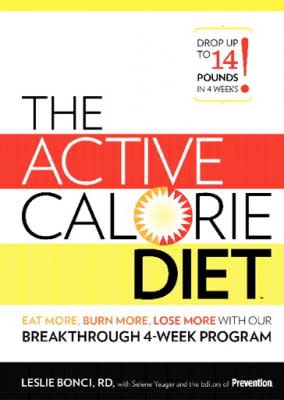8 Ways to cut calories while you cook
If your approach to dinnertime is "open, nuke, and inhale," you're missing out on a calorie-cutting opportunity. Making your own food burns twice as many calories as calling for delivery or sitting idly by for 5 minutes as a frozen dinner spins inside the microwave. You're also much more mindful of the types of foods you're putting in your mouth when you take the time to prepare them yourself. Try these cooking tips to boost nutrition and keep calories in check:
See more of our best cooking tips
1. Get (at least) one good knife: If you already have a set, great. If you don't, invest in at least one good kitchen knife. Trying to slice, dice, and chop vegetables with dull knives is a frustrating, if not mildly dangerous, exercise. With a good, sharp knife, you're much more likely to chop those fruits and veggies and carve freshly cooked meat because it's much easier. If you're going to buy more than one, I'd recommend a simple set of five or six knives that includes a chef's knife, a paring knife, a serrated knife, and a larger carving knife.
24 Kitchen gadgets that simplify your life
2. Go nonstick: Use a good nonstick pan for sautéing and baking. A well-seasoned cast-iron pan is also a good choice. Both allow you to avoid using gobs of butter or too much oil in favor of lighter, more flavorful options like wine, a mist of oil, vegetable stock, or fruit juice.
Healthy chicken dinner: pan-fried chicken with tarragon
3. Measure it: Dig out your measuring cups for 4 weeks and measure your portions. Use a 1- or 2-cup Pyrex measuring cup for fluids like 1% milk and a set of metal or plastic cups for solid measures like cooked pasta, rice, and whole grain cereal.
Find out if your portions are out of whack
4. Weigh it: Most people have no clue what 4 ounces of meat or 1 ounce of cheese really looks like. So a food scale lets them see those sizes in no uncertain terms. But 1 ounce of cheese doesn't go very far . . . unless you shred it. Then you can sprinkle it around and stretch it out over an entire meal. That's the positive power of a food scale.
Easy ways to measure food with your hand
5. Cook veggies crunchy, not soggy: Raw veggies take the most energy to chew and digest. In fact, cooked carrots require 40 percent less energy to chew than uncooked ones. But there's a little trade-off with nutrition. Lightly cooking vegetables like carrots and broccoli helps break down their cells and makes the vitamins, minerals, and other plant nutrients more accessible. And let's face it: Many vegetables simply taste better cooked. The simple solution is to cook vegetables so that they're just tender enough to press through with a fork but still crisp and crunchy, not soft and mushy.
See 14 ways to make veggies taste better
6. Make food medium-rare: Naturally you're going to cook most of your meat through and through. But if you like your steak medium-rare to rare, you're in luck. Eating your meat on the rarer side of the doneness scale can boost the calories you burn digesting your meal by up to 12 percent. Note that ground meat is an exception to the rule. Cook and order it well done. It is a food-safety concern if underdone.
Try this Biggest Loser Recipe: Italian Flank Steak
7. Spritz and spray: Olive oil and other healthy cooking fats are a welcome part of the Active Calorie Diet. But that doesn't you should be drowning your food in oil. Use one of the plastic spouts that allow you to drizzle small amounts of oil in your sautéing pan or on your salads. Or pick up a Misto Olive Oil Sprayer. This pump-action device sprays just enough oil to coat your cooking surface and foods.
See what skin condition olive oil can help cure
8. Get steamed: Boiling vegetables can make them mushy and tasteless-plus you end up pouring too many vital nutrients, which are leeched into the water, straight down the drain. For a few bucks, you can buy a metal insert that turns any pot or saucepan into a steamer that's perfect for preparing broccoli, asparagus, beets, potatoes, corn, carrots, cauliflower, you name it! Steaming preserves the food's flavor and nutrients, but by themselves, steamed veggies can be kind of bland. Remember your warming Active Calories and liberally apply spices like garlic, ginger, balsamic vinegar, and freshly ground pepper.
The most important fruits and vegetables to buy organic
Do you snack while you cook?
More from Prevention
Burn More Calories-By Eating!
25 Fun Ways to Shake Up Boring Salads
See 5 Healthy Recipes That Help Your Body Fight Fat

Order Prevention today and receive a FREE Trial Issue and FREE Pedometer!
Order your copy of The Active Calorie Diet today!

